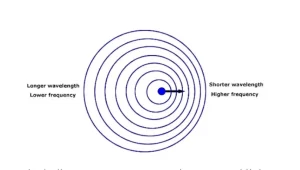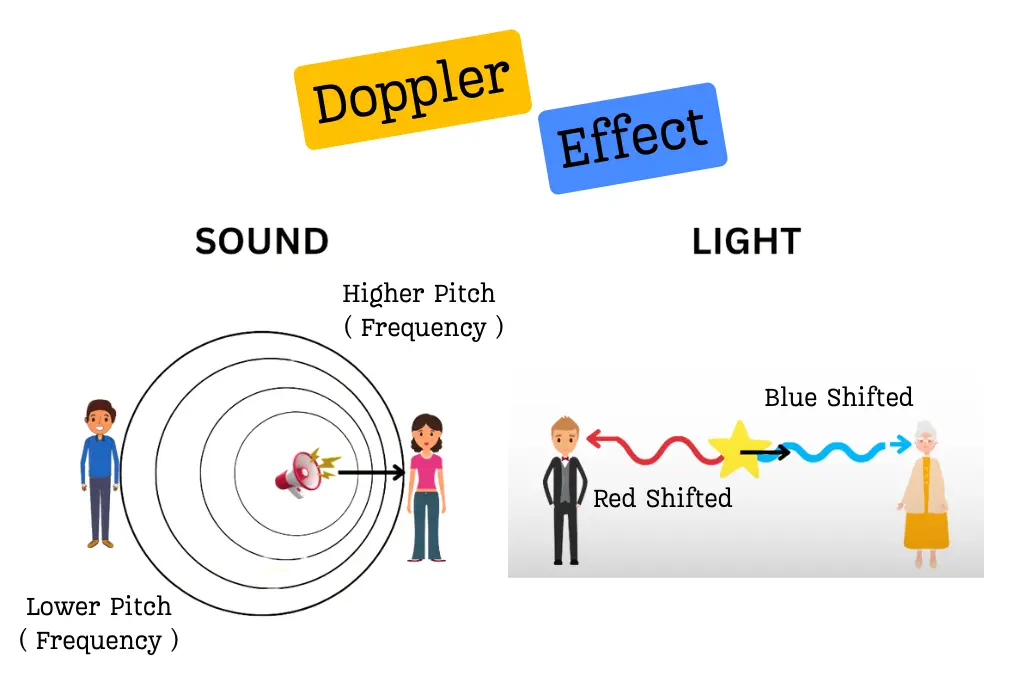Imagine an ambulance blaring its siren as it rushes past you. The pitch seems higher as it approaches and lower as it recedes. This remarkable change in sound is a powerful phenomenon known as the Doppler effect, named after Austrian physicist Christian Doppler who first theorized it in 1842. This article delves into the intricate dance of frequencies in motion, exploring its essence, applications, and impact across various domains.
Demystifying the Dance:
At its core, the Doppler effect refers to the apparent change in frequency or wavelength of a wave perceived by an observer when either the source of the wave or the observer itself is moving relative to each other. Think of it as a symphony of frequencies where the motion acts as the conductor, altering how we perceive the musical notes.
The Language of Numbers:
Understanding the Doppler effect requires dipping our toes into the mathematical pool. The Doppler shift formula quantifies the relationship between the observed and source frequencies, taking into account factors like the relative velocity and the type of wave involved. This formula becomes the key to unlocking the secrets of this dynamic phenomenon.
From Whispers to Light Shows:
The Doppler effect doesn’t discriminate between sound and light waves. In the world of sound, it’s responsible for the pitch shift you hear with the ambulance siren. It’s also at play in determining the distance of approaching or receding stars by analyzing the subtle changes in their emitted light, a technique crucial in the field of astronomy and cosmology.

Equations Unmasking the Magic:
For the curious minds delving deeper, separate equations for sound and light waves unveil the specific nuances of the Doppler shift in each domain. By analyzing the interplay between frequency, wavelength, and velocity, these equations become the decoder rings that unlock the fascinating language of wave motion.
Beyond Theory: A World of Applications:
The Doppler effect isn’t just a scientific curiosity; it has numerous practical applications that touch our daily lives. From the ultrasound scans used in medicine to the radar systems employed by traffic police, the Doppler effect plays a crucial role in diverse fields.
Mastering the Equation:
As with any dance, the steps need to be precise. A comprehensive analysis of the Doppler effect equation reveals its variations under different circumstances, equipping us with the tools to accurately interpret and utilize this phenomenon in real-world situations.
Everyday Encounters:
The Doppler effect isn’t confined to laboratories. From the changing pitch of a speeding train whistle to the distinctive ‘redshift’ observed in distant galaxies, this phenomenon manifests itself in a multitude of everyday scenarios, reminding us of its ubiquitous presence.
Music to Our Ears:
Beyond the realm of science, the Doppler effect even influences the world of music and acoustics. It explains why musicians tune their instruments differently on stage to compensate for the effect of sound reaching different parts of the audience.
Challenges and the Road Ahead:
While the Doppler effect is a powerful tool, its accuracy can be affected by various factors. This section delves into the challenges faced in measurement and explores strategies to overcome these limitations, ensuring the reliable application of this valuable phenomenon.
The Future Symphony:
The story of the Doppler effect doesn’t end here. Ongoing research and technological advancements promise to unlock new and exciting applications. From potential uses in space exploration to advancements in medical imaging, the future of this phenomenon seems as vibrant and dynamic as the waves it describes.
Concluding Notes:
By exploring the Doppler effect, we embark on a journey into the captivating world of wave dynamics. Its applications span across scientific, technological, and even artistic domains, solidifying its place as a cornerstone in our understanding of the universe and its wonders. So, the next time you hear a siren wail or gaze at the stars, remember – it’s the Doppler effect orchestrating this symphony of frequencies in motion.

This is the apnakanpur.com admin account.

Be First to Comment